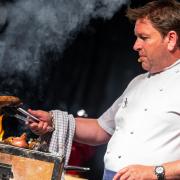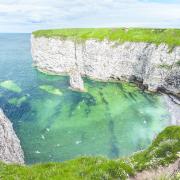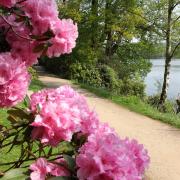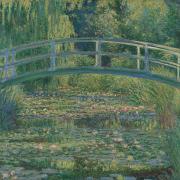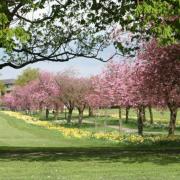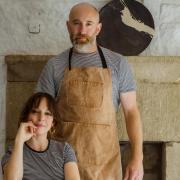The lobster trade on the Yorkshire Coast has grown by a mighty 400 per cent over the last 15 years and could ensure the future of the fishing community. We pay a visit to Whitby to find out more
The next time you sit down to treat yourself to the delicious luxury of a plate of lobster and chips, pause for a moment before you eat to reflect on the almost overwhelming odds that lobster has overcome to reach adulthood.
A minute baby lobster, straight from the egg, has just a 0.005 per cent chance of surviving to full grown – that means just one in every 20,000 makes it.
Combine that startling figure with the fact that the trade in lobster on the Yorkshire Coast has grown by an equally mind-blowing figure of 400 per cent over the last 15 years, and you can see just how important, in terms of both the coastal ecosystem and its economy, the work of people like Joe Redfern at the Whitby Lobster Hatchery is.
Joe’s aim is to increase the odds of a tiny baby lobster’s survival, meaning more lobster to catch in the seas of the Yorkshire coast and, in turn, a stronger and more prosperous fishing industry.
He’s spearheading a scheme which was originally the brainchild of the local fishing community – the Whitby Lobster Hatchery. Based in a part of the Whitby Fish Market, on the harbourside Pier Road, the hatchery is a charity, which has been funded by donations from grants and donations from local business and individuals. It will include a visitor centre which is a Community Interest Company – a limited company which benefits the community rather than private shareholders.
It’s all still in its early stages, but marine biologist and fisherman Joe hopes it will be fully up and running – and open to the public – by next spring.

The process is straightforward, but brilliant. Local fishermen who catch a berried female lobster – in other words, she’s laden with eggs, perhaps 8,000 for a 1lb female, anything up to 100,000 for a 9-pounder – take her to Joe. The females are cared for in tanks in a brood stock room until the eggs hatch, when the tiny larvae are transferred into divided trays stored in layers of plastic trays in an ‘aqua hive’, so named because the trays resemble honeycombs.
Each baby has its own little cell – essential because, Joe explains, if they’re not kept separate they’ll eat each other.
And there they grow safely until they’ve moved on from being free-floating larvae to becoming bottom dwelling, or benthic, juvenile lobsters. By the time they’re eight to 12 weeks old, they’re much more capable of fending for themselves and stand a way better chance of survival out at sea – so they’re released, usually between late spring and late autumn. It’s believed that up to 30 per cent of baby lobsters raised this way will survive into adulthood – a huge increase on that 0.005 per cent.
It’s that simple. And it could ensure the future of the fishing community in Whitby.
Connect with nature
Alongside the central work of the Yorkshire Lobster Hatchery, a visitor’s centre will provide a fascinating insight into marine life and the importance of the project. Visitors will be able to look into the hatchery and see displays which replicate the reefs of the Yorkshire coast and introduce them to some of the local marine life.
‘I want people to be able to connect with our local marine environment,’ says Joe. ‘It’s important to foster a sense of guardianship and the importance of conservation.’

Buy a lobster, release a lobster
One of Joe’s many innovations at the Whitby Lobster Hatchery is the Buy One, Release One Scheme. Restaurants and fishmongers signing up to the scheme commit to donating £1 each time they sell a lobster – that being roughly the amount it costs to raise a hatchling from egg to 12 weeks old, when it can be released back into the sea.
So far, the Hatchery is working with the world-famous Magpie Café, directly opposite its HQ on Whitby’s Pier Road, and the lauded Estbek House in Sandsend, plus fishmongers The Whitby Catch, also on Pier Road, and Cod Roe Fishmongers on the town’s Baxtergate.
Joe says that all four have seen lobster sales rise since they signed up to the scheme and he’s keen to see more local fish restaurants and suppliers get involved – just contact him via the website:
whitbylobsterhatchery.co.uk
Where to eat lobster (and other delicious seafood) on the Yorkshire Coast
The lobster catch off the Yorkshire Coast has increased massively in recent years – yet still around 90 per cent of it is exported, mostly to Spain and France. But there are plenty of places along the coastline where you can enjoy this local delicacy, and other fantastic local seafood – it’s hard to beat Whitby crab!
At the northern end of the Yorkshire Coast, head to the appropriately named Cod and Lobster in Staithes; lower down, to Sandsend’s Estbek House, The Fish Cottage or The Hart Inn; and to Whitby’s Magpie Café, White Horse and Griffin, The Fisherman’s Wife, The Marine or Trenchers. In Scarborough, you’ll find a wide selection of fish dishes at La Lanterna Ristorante and the harbourside Lookout on the Pier. And if you’re heading to Filey, pay a visit to Inghams Fish Restaurant – you’ll know it from the lifesize yellow-clad fisherman standing outside!
READ MORE: Where to enjoy a Fruits de Mer feast on the Yorkshire Coast
Feeling blue
We all know that lobsters are blue in the wild, and only turn red when they’re cooked, right? Well, not quite – in fact, 99 per cent are midnight bluey black, but the remaining 1 per cent come in quite a range of colours, from red to khaki green to a dazzling electric blue (these rare specimens are known as coronation lobsters), and even pied harlequin versions. One of Joe’s future projects is to undertake a research project to find out why there’s so much variety and what the colours signify.




